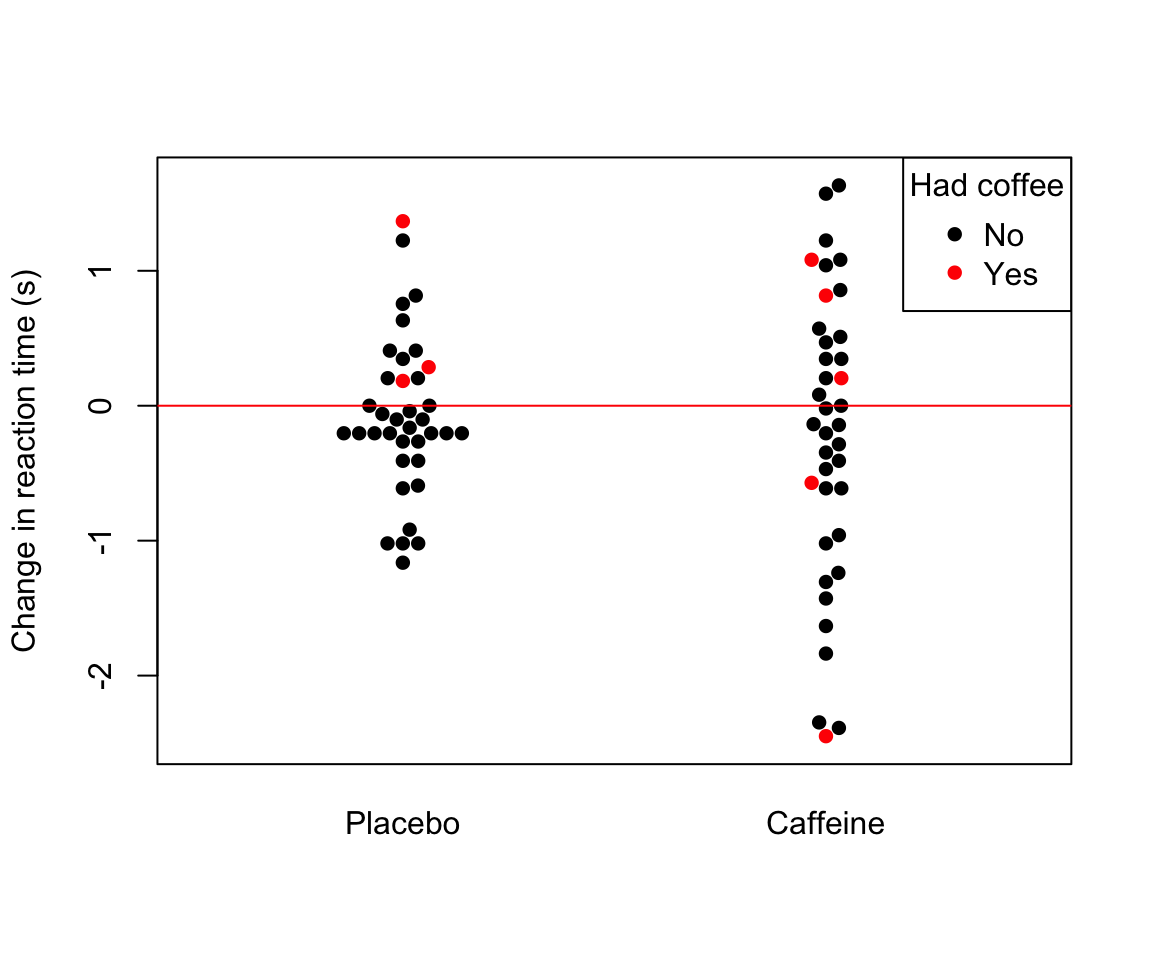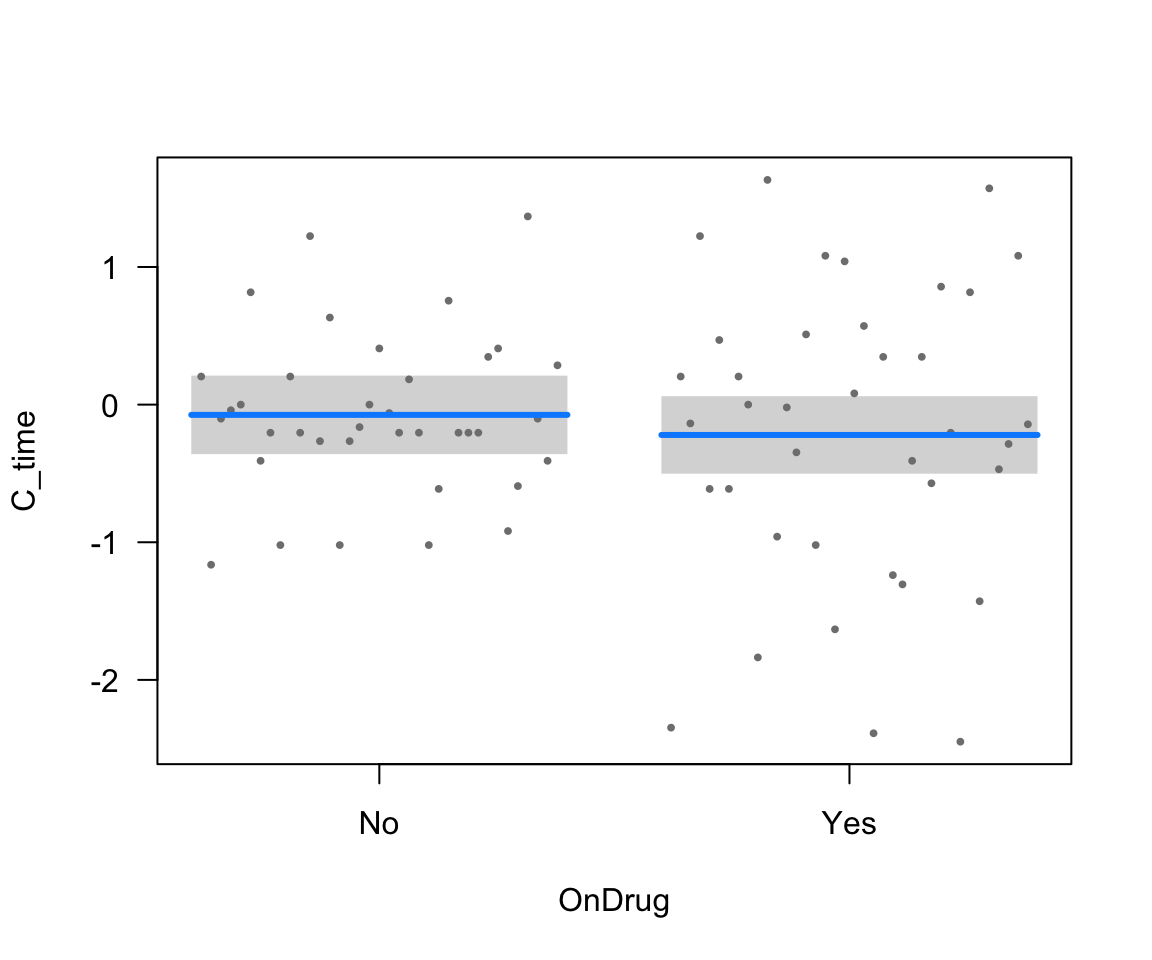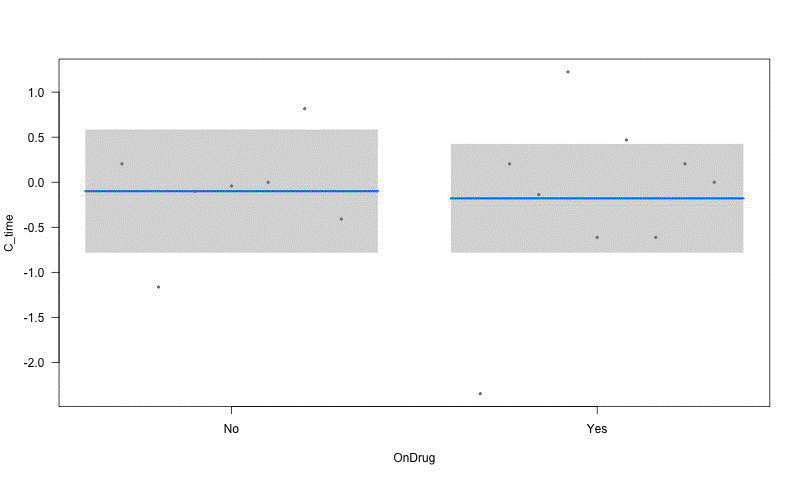Does Redbull give you wings?
Caffeine RCT by students from my Cambridge Tradition class.
The text of this report is primarily based on the work of Catherine Fan, Sarah Langlois, Molly Meade, Indee Ratnayake, Justine Colvin and Jessica Mackay. They are students majoring in Medical Science on the Cambridge Tradition program.
Introduction
Caffeine, a bitter, white crystalline xanthine alkaloid, acts as a central nervous system stimulant drug in the human body. It is commonly used in humans as a way to temporarily ward off drowsiness and restore alertness. Caffeine is found in the seeds, leaves and fruits of some plants. Caffeine serves as a natural pesticide for plants because of the effect it has on insects, inhibiting their ability to feed on the plant.
In the body, adenosine binds to adenosine receptors, decreasing cell activity. Caffeine competitively binds to adenosine receptors, which prevents the adenosine from binding, and in turn leads to increased neuron firing. Caffeine also constricts blood vessels in the brain. In response to increased neuron firing, the pituitary gland releases adrenaline, which in turn increases the heart rate. Previous studies suggest caffeine reaches peak plasma between 35-45 minutes after ingestion. This trial unravels if the caffeine content of Redbull has any clinical value in decreasing reaction times
Aim
The aim of this experiment is to explore the effects of a caffeine challenge equal to the dose present in a red bull on the reaction times, heart rates and blood pressure of Cambridge Tradition students aged 16-17 years of age in a randomised controlled trial
Methods
The class roster for the 2014 Medical Science class was randomised into two equally sized groups. The intervention group recieved 150 ml of orange juice with a caffeine concentration of 53.3 mg/100ml. The placebo group recieved 150 ml of orange juice with 80mg of glycolate. Glycolate is a tasteless, odorless disintegrant, which is available sterile and leaves a similar residue to dissolved caffeine.
All students took baseline heart rates, and reaction tests at baseline and around 45 minutes after intervention. For the reaction test, each student held their fingers over the 0 cm mark on a 30cm ruler, and measured where they caught it when released by another student. The test was taken in triplicate and the mean recorded. Reaction test results need to be converted to a temporal measure of reaction speed. We can convert the metres the ruler fell to time using:
$$ Time = \sqrt{\frac{2*Distance}{Acceleration}} $$
which equates to:
$$ Time = \sqrt{\frac{2*Distance}{9.8}} $$
A sub sample of 16 students also collected systolic and diastolic blood pressure using an automated cuff at baseline and around 45 minutes after intervention.

Results
46 students completed the trial, providing 75 observations. There were no loses to follow up. For 8 observations the student had taken a caffeinated beverage earlier that day.
Table 1. Change in the two arms
| Outcome | Placebo group | Caffeine group |
|---|---|---|
| Reaction time (s) | -0.07 | -0.22 |
| Heart rate (bpm) | -1.2 | 2.9 |
| Systolic (mmHg) | -2.5 | 6.4 |
| Diastolic (mmHg) | 1.8 | 5.1 |
Table 1 indicates changes in HR, reaction time and BP occured in both the placebo and caffeine groups. Reaction time decreased in the caffeine group decreased to a greater degree than the placebo group, while HR and BP increased in the caffeine group.
Figure 1. Change in reaction time

Figure 1 shows the raw changes in reaction time for the two arms. The spread of observations was much greater in the caffeine group, and there was a stronger tendancy to a decrease in reaction time. Figure 1 also suggests that the raw change may not be an appropriate measure, and if we include the 95% confidence intervals of these values we may be better placed to understand whether a result is statistically significant.
Figure 2. Change in reaction time with 95% confidence intervals.

Figure 2 shows the spread with grey boxes which represent the 95%CI, which is the interval we believe has 95% confidence of including the true mean for each arm.
Figure 3. As observations were collected, our statistical power increased

Figure 3 demonstrates that as observations were collected, our confidence intervals decreased, and in turn our ability to be confident in identifying a small change increased.
Table 2. Caffeine effect on HR, BP and reaction time with confidence intervals
| Outcome | Estimate | 95% confidence interval |
|---|---|---|
| Reaction time (s) | -0.15 | -0.48 to 0.19 |
| Heart rate (bpm) | 4.1 | 0.3 to 8.0 |
| Systolic (mmHg) | 8.9 | 1.3 to 16.4 |
| Diastolic (mmHg) | 3.3 | -2.7 to 9.2 |
Table 2 shows the mean change in the caffeine group, compared to the placebo group. We found that reaction time decreased by 0.15 seconds, and we are fairly (95%) confident the mean change in reaction time after ingesting 80mg of caffeine is contained within the interval of a decrease of -0.48 to an increase of 0.19 seconds. More participants, or a more accurate measure of reaction times, may have led to us finding a statistically sound decrease in reaction time.
Caffeine led to a statistically significant increase in heart rate (4.1 bpm; 95%CI 0.3 to 8.0) and systolic blood pressure (8.9 mmHg; 1.3 to 16.4), but not diastolic blood pressure (3.3 mmHg; -2.7 to 9.2).
Discussion
This trial is hindered by bias, random error and limited inference. The effect of caffeine is will depend on an individuals tolerance, and participants that were caffeine niave tended to respond to a much greater degree. Students were also not in a controlled environment during the study. Some students remained seated immediately before taking measurements, while some may have walked around, eaten food, or been involved in other activities that effect heart rate like playing assassins. The study was also completed over multiple days, potentially allowing the effect of external events to influence the results.
The ruler based reaction test results were liable to contain excess random error. The space between the ruler and the person catching varied, and there was a lot of variation in the three measurements that were averaged. It was also shown that regurlarly completing the ruler test gives individuals a chance to improve with practice.
Inference is limited as the study population were all young healthy students, from similar socio-economic backgrounds. Despite the rich variation in ethnicities, it is likely that the results cannot be applied to older and younger populations. It is also unclear whether these results represent a caffeine tolerant population, and how results would differ in those that do, and do not, drink coffee or tea.
Although a statistically significant increase in heart rate and systolic blood pressure was detected after ingesting 80mg of caffeine, the small differences may not be large enough to be clinically significant. Reaction times decreased, and diastolic blood pressure increased, but the results were not statistically significant.